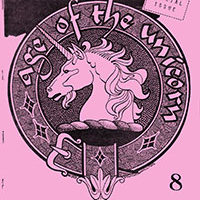
An interesting proto-pulp character is the French adventurer Rocambole.
While being well known around the world, the character is sadly less known in the English speaking world. He was created by Pierre Alexis Ponson du Terrail in a ongoing newspaper serial called “The Dramas of Paris,” which were later reprinted in a series of nine novels published between 1857 and 1870. If the title of the series seem unusual, this was because there were several others with similar titles such as “The Mysteries of Paris” (by Eugene Sue), “The Mysteries of London,” and the like by others.
Rocambole was an adventurer who began on the wrong side of the law, but ended up doing good. Also like others, he gathered a group of dedicated assistants, selected from various levels of society, ready to drop everything to help their “Master.”
He would often operate in the shadows, pulling strings from behind the scenes. And what I think most interesting, he mastered the skills of the Orient and inherited the secrets of ancient Tibetan (or equally exotic) civilizations. In short, Rocambole became the prototypical larger-than-life hero, decades before the pulp heroes.
Many claim he is the start of the modern crime adventure series. He is so popular, that the term “rocambolesque” was coined to refer to fantastical adventure. There were also movies and TV series with him in France.
I had hoped that Black Coat Press might reprint the series of novels, but that doesn’t look likely. Thankfully, someone has stepped up to the job. That someone is Basil Balian. He read the series in French growing up in Iraq, and is creating an English adaptation of the full series. His plan is to publish the series in three volumes. Each volume will be divided into four “books,” which doesn’t match up with the nine original volumes. The adapter claims there are 17 books, so I think that some of the original books were broken up into smaller books in his country.
 At this point, the first two volumes are available from Amazon. The first volume, “The Dark Side,” tells of Rocambole’s life of crime and introduces all the characters who were Rocambole’s enemies, several of whom became life-long friends after his redemption. It is followed by the second volume, “Redemption,” which tells of his reformation. It will be concluded with the third volume, “Crusade.” In this adaptation he maintains all the major plots of the original saga but eliminates minor subplots and characters and replaces them with original material to bridge the gaps.
At this point, the first two volumes are available from Amazon. The first volume, “The Dark Side,” tells of Rocambole’s life of crime and introduces all the characters who were Rocambole’s enemies, several of whom became life-long friends after his redemption. It is followed by the second volume, “Redemption,” which tells of his reformation. It will be concluded with the third volume, “Crusade.” In this adaptation he maintains all the major plots of the original saga but eliminates minor subplots and characters and replaces them with original material to bridge the gaps.
There is also a short video trailer on YouTube under the title: “Rocambole Lives.” I have used the page on the character at Black Coat Press’ Cool French Comics/French Wold Newton Universe site to better understand the character and the novels that make up his saga.
The first volume, “The Dark Side,” includes the first three novels: “The Mysterious Inheritance,” “The Jack of Hearts Club,” and “The Exploits of Rocambole.” The third novel is broken into the third and fourth books in this volume.
In the first two novels, the main characters are a pair of half-brothers. Count Armand de Kergaz and Andrea de Felipone. Armand is good. He leads a group of assistants who help others (in the second novel this becomes a more formal “private police force” battling evil). Andrea is evil, and covets Armand’s money and title, and leads his own gang of thieves and murders. The story of them took up a lot of the original novel, and in this volume this is quickly covered in flashbacks in the prologue and the first “book.” It’s actually very complex, as Andrea and his father tried to get Armand out of the way so that Andrea would inherit it all.
The main story begins when Armand is summoned by a dying count, who reveals that he has a descendant he does not know (he basically raped a young girl when he was a young soldier). He wishes to repent by finding this descendant and bequeathing his fortune to them. Dying, he asks Armand to take up this task. Andrea is doing the same, but to get his hands on the fortune. It turns out the descendant is a young girl about to be married, so Andrea schemes with a courtesan called Baccarat to get her fiance out of the way, so that Andrea, operating under the guise of an English noble named Sir William, may marry her. Along the way Armand meets a girl he falls in love with. In the end, Andrea is thwarted when Baccarat changes sides. He is sent packing, Baccarat becomes a nun(!), and we have a triple wedding of Armand and his love, the now-rich descendant and her love, and Baccarat’s sister and her love.
Oh, and Rocambole? He is briefly met toward the end as an orphan helping out Andrea who betrays him for money.
The next novel, “The Jack of Hearts Club,” is book two of this volume and is set five years later. Armand and his wife now have a son, and Armand is running his private police force helping others. Andrea comes back running his gang called the Jack of Hearts Club, with Rocambole as his right hand man. Andrea tries to claim he has reformed and makes amends with his brother, who puts him in charge of his private police force to stop the Jack of Hearts Club. Talk about putting the fox in charge of the hen house! The main scheme in the book is to bump off the wife of a man so his lover can marry him, while Andrea can also enact his revenge against the people who thwarted him in the last novel — as well as kill his brother and marry his wife. But Baccarat returns and works to prevent this, with the help of Russian Count Artoff.
In the end, Andrea’s plans are destroyed, he is blinded, has his tongue cut out and is shipped to the South Seas. Baccarat marries Count Artoff, and Rocambole escapes unharmed with Andrea’s files.
 As noted, the next novel, “The Exploits of Rocambole,” is divided into books three and four. Book four is also called “The Revenge of Baccarat” and the two are set five years after the previous one. Now Rocambole is the main villain. Andre, blind and mute, returns and is assisting him behind the scenes. Armand is not part of the storyline. Rocambole has somehow taken the place of a marquis several years past, and is plotting to marry the daughter of a Spanish duke. But he must get rid of some rivals. Baccarat returns, and to get her out of the way, Rocambole poisons Count Artoff to drive him mad. It looks like he will succeed. Toward the end of the story, to ensure his safety, Rocambole kills both Andrea and Madame Filip, who had raised him as a son, as he feels they are the only ones who can reveal who he really is.
As noted, the next novel, “The Exploits of Rocambole,” is divided into books three and four. Book four is also called “The Revenge of Baccarat” and the two are set five years after the previous one. Now Rocambole is the main villain. Andre, blind and mute, returns and is assisting him behind the scenes. Armand is not part of the storyline. Rocambole has somehow taken the place of a marquis several years past, and is plotting to marry the daughter of a Spanish duke. But he must get rid of some rivals. Baccarat returns, and to get her out of the way, Rocambole poisons Count Artoff to drive him mad. It looks like he will succeed. Toward the end of the story, to ensure his safety, Rocambole kills both Andrea and Madame Filip, who had raised him as a son, as he feels they are the only ones who can reveal who he really is.
But in book four (“Revenge of Baccarat”), Baccarat is able to find a cure for her husband. She teams up with Armand to find the real marquis that Rocambole is claiming to be. After a search, they succeed (he was imprisoned in a Spanish jail, no one believing him to be a French marquis). In the end they are able to turn the table on Rocambole. The duke’s daughter marries the real marquis, and Rocambole is imprisoned in his stead. At the end of the story, we find Rocambole in a French prison four years later when his “sister” (the sister of the marquis who thought Rocambole was really him for many years) does not even recognize him. He is crushed and devastated.
I suspect that the next volume will contain the fifth Rocambole novel (the fourth was “retconned” out because readers didn’t like it, long before this was common in comics), called “The Resurrection of Rocambole.” Without reading it, I don’t know for sure, and suspect it may have more than just that novel. And then the final volume will probably have novels six through nine, or what is left.
Overall, I found this volume very enjoyable. The translator has adapted the work, bringing the language to a form more acceptable to modern audiences, and had trimmed and cut the various subplots (from what I understand in reading the page on Rocambole), making the work overall very readable. I did find a few flubs with misspellings, but not too many. I would liked to have seen more explanatory materials, and the original novel titles kept in some way. But I look forward to getting and reading the next volume, and hope that volume three comes soon.
I recommend this series to other pulp fans. It’s great to read some of the foundational works, and I look forward to reading the stories of Rocambole as a hero.



